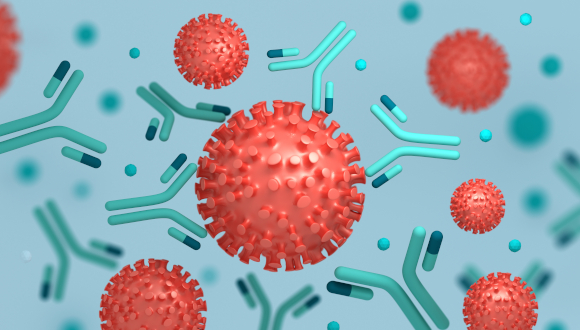Is a virus naughty or nice?

TAU research reveals how viruses "decide" to help or hinder their bacterial hosts
Support this researchResearchers from Tel Aviv University (TAU) have deciphered a novel complex decision-making process that helps viruses choose to turn nasty or stay friendly to their bacterial hosts. In a new paper, they describe how viruses co-opt a bacterial immune system intended to combat viruses like themselves during this process.
The study was led by Polina Guler, a PhD student and other members of the laboratory of Professor Avigdor Eldar at TAU’s Shmunis School of Biomedicine and Cancer Research at the George S. Wise Faculty of Life Sciences. The paper was published on January 4, 2024, in Nature Microbiology.
Bacteriophages, also known as phages, are viruses that infect bacteria and use the infected bacteria to replicate and spread. Even though the word “bacteriophage” (meaning “bacteria-devouring” in ancient Greek) suggests destruction, many phages can adopt a “sleeping” mode in which the virus incorporates itself into the bacterial genome instead. In fact, the virus can even have a symbiotic relationship with the bacteria, and its genes can help its host prosper.
Professor Eldar explains that phages usually prefer to stay in the “sleeping,” dormant mode, in which the bacteria “cares” for their needs and helps them safely replicate. Previous research from the lab has shown that the phages’ decision-making uses two kinds of information to decide whether to stay dormant or turn violent: the “health status” of their host, and signals from outside indicating the presence of other phages.
“A phage can’t infect a cell already occupied by another phage,” Professor Eldar says. “If the phage identifies that its host is compromised but also receives signals indicating the presence of other phages in the area, it opts to remain with its current host, hoping for recovery.
“But if there is no outside signal, the phage ‘understands’ that there might be room for it in another host nearby and it’ll turn violent, replicate quickly, kill the host, and move on to the next target,” Eldar explains.
The new study deciphers the mechanism that enables the virus to make these decisions. “We discovered that in this process the phage actually uses a system that the bacteria developed to kill phages,” Guler says. “If it does not sense a signal from other phages — indicating that it has a good chance of finding new hosts — the phage activates a mechanism that disables the defense system.
“The phage switches to its violent mode, and with the defense system neutralized, it is able to replicate and kill its host,” Guler continues. “If the phage senses high concentrations of the signal, it utilizes its defense activity in order to turn on its dormant mode instead of disabling the defense system.”
“The research revealed a new level of sophistication in this arms race between bacteria and viruses,” Professor Eldar says. “Most bacterial defense systems against phages were studied in the context of viruses that are always violent. Far less is known about the mechanisms of attacks and interaction with viruses that have a dormant mode.
“The bacteria also have an interest in keeping the virus in the dormant mode, first and foremost to prevent their own death, and also because the genes of the dormant phage might even contribute to bacterial functions.
“Phage research may lead to a better understanding of viruses in general. Many human-infecting viruses can also alternate between dormant and violent modes,” Professor Eldar concludes.